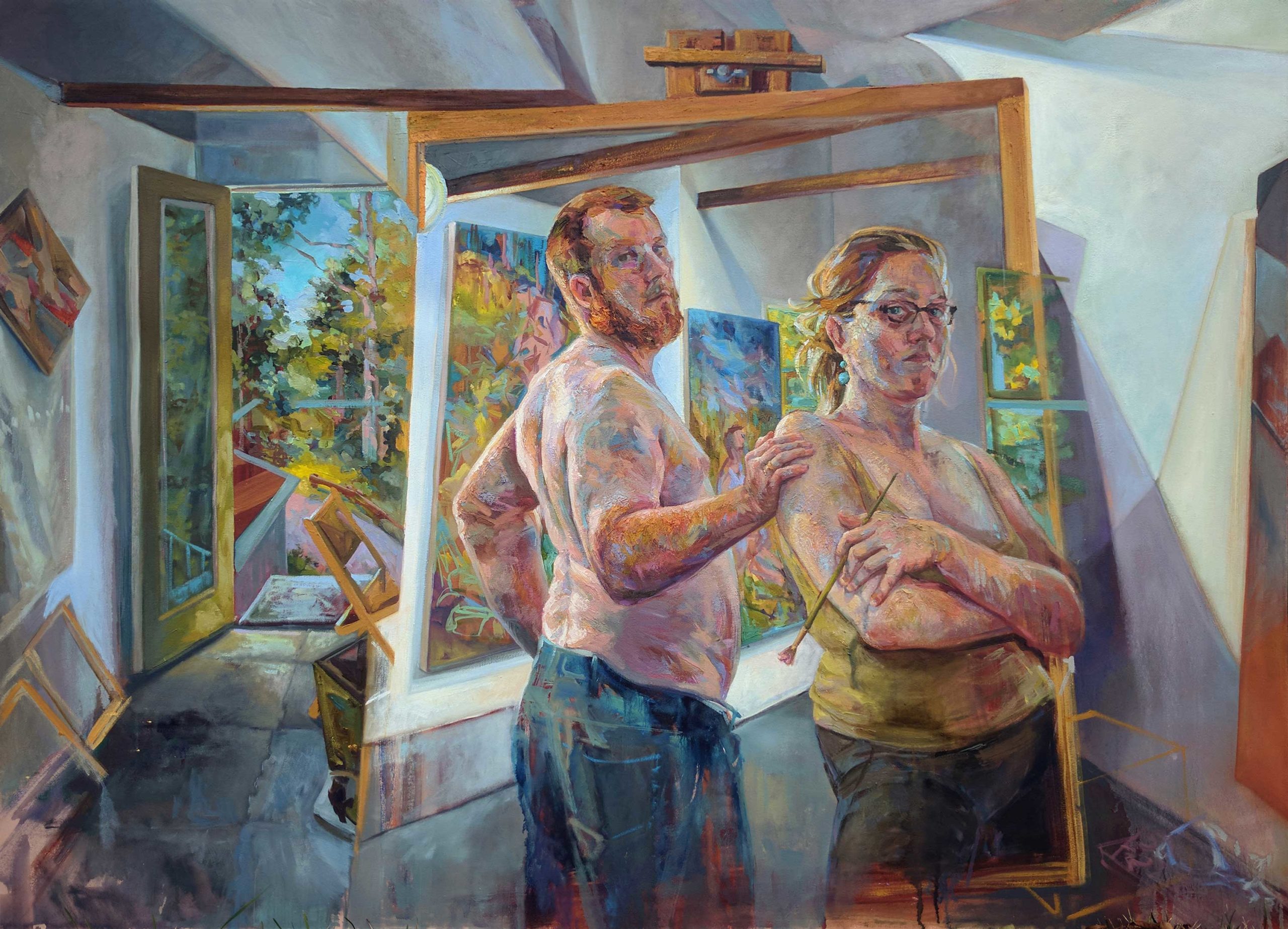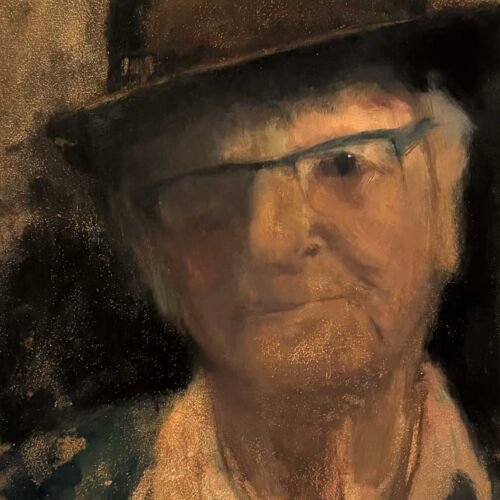The Development of Figurative Oil Painting: Comprehending Its Historical Value and Modern Interpretations
The development of figurative oil paint serves as an engaging lens with which to take a look at the interaction in between creative expression and historical context. Contemporary artists, drawing from this rich heritage, are now reinterpreting the human number in ways that challenge standard stories.
Beginnings of Figurative Oil Paint
The beginnings of figurative oil paint can be mapped back to the early Renaissance in Europe, particularly in the 15th century. The growth of oil paint allowed for greater deepness of color and information, boosting the realism and vibrancy of their work.

In this transformative era, numbers were frequently portrayed within contextually abundant atmospheres, showcasing not just their physical attributes yet likewise their mental states. Leaders such as Jan van Eyck and Titian harnessed the medium's convenience, employing layering methods to attain brightness and structure. This innovation assisted in the representation of elaborate materials and the subtleties of skin tones, adding to the development of portrait and narrative scenes.
Additionally, the Renaissance emphasis on humanism fostered an admiration for individuality, which subsequently influenced musicians to develop more vibrant and relatable figures - figurative oil painting. Consequently, figurative oil painting became an effective car for storytelling and psychological involvement, preparing for future artistic movements and designs
Key Historical Movements
Considerable historical motions have formed the advancement of metaphorical oil painting, each adding special approaches and techniques that expanded the medium's opportunities. The Renaissance noted a turning point, highlighting realistic look and the human form, with artists like Leonardo da Vinci and Michelangelo pressing the limits of physiological precision and perspective. Following this, the Baroque age brought remarkable contrasts of light and shadow, exhibited by Caravaggio, that instilled religious styles with extreme emotionality.
The 19th century introduced Romanticism and Realism, where artists such as Delacroix and Courbet tested classic perfects, concentrating on individual expression and day-to-day life. The advent of Impressionism further transformed the medium by highlighting the effects of light and color, resulting in a separation from traditional representation.
In the early 20th century, motions like Expressionism and Cubism redefined figurative paint with abstraction and the expedition of psychological deepness. Each of these activities not only mirrored the social modifications of their times yet additionally laid the groundwork for contemporary analyses. The interplay in between these historic movements has actually created an abundant tapestry of viewpoints and styles, influencing contemporary musicians in their quest of capturing the human experience on canvas.
Techniques and Materials Evolution

Throughout the Baroque duration, techniques such as chiaroscuro and sfumato emerged, boosting the psychological vibration of metaphorical make-ups. Artists started to trying out lusters and impasto, adjusting appearance and brightness. By the 19th click here for more info century, developments like using pre-mixed paints in tubes reinvented ease of access, allowing artists to repaint en plein air and record the short lived effects of light.
The 20th century saw the introduction of synthetic pigments and mediums, which increased the palette and altered the consistency of oil paints. The exploration of brand-new application methods, such as scheme blades and brushes of differing tightness, additional varied creative expression. Collectively, these improvements reflect the developing connection in between products, techniques, and the imaginative vision intrinsic in figurative oil paint.

Contemporary Interpretations
Contemporary interpretations of metaphorical oil paint show a dynamic dialogue between tradition and advancement, where musicians challenge developed standards and explore varied motifs. This advancement materializes in different ways, as contemporary artists mix timeless strategies with modern-day concepts, typically attending to social, political, and personal narratives.
Numerous experts attract inspiration from historic jobs, yet they instill their pieces with modern point of views, using the human type as a vehicle for commentary on culture, gender, and identification. Artists progressively explore abstraction, distortion, and mixed media, which enables a wider analysis of the figure and its context.
In addition, making use of brilliant color combinations and unique compositions usually offers to disrupt conventional seeing experiences, provoking crucial engagement from target markets. This shift in focus extends beyond appearances; it reflects a growing understanding of the complexities of human experience in an interconnected world.
As figurative oil painting continues to develop, it continues to be a crucial medium for discovering the subtleties of contemporary life, embodying both a respect for heritage and a commitment to dynamic thought. The result is a rich tapestry of expression that reverberates with the intricacies of the modern-day human problem.
Effect On Modern Art
The impact of figurative oil paint on modern-day art is extensive, as it has constantly influenced a myriad of artistic movements and methods throughout the 20th and 21st centuries. From Expressionism to Surrealism and beyond, the expedition of the human figure has stayed a main theme, allowing musicians to communicate intricate feelings and stories. This emphasis on figurative representation has actually caused a re-examination of traditional methods, leading to innovative methods that blend realism with abstraction.
In addition, contemporary artists have embraced metaphorical oil paint as a way to resolve political and social issues, using the medium to test assumptions of culture, identity, and sex. The rebirth of passion in figurative job in current years shows a hoping for connection in an increasingly electronic globe, where human experience and feeling are vital.
In addition, the dialogue in between figurative oil painting and modern art appears in the jobs of musicians such as Kehinde Wiley and Jenny this Saville, that attract on historic referrals while infusing their pieces with contemporary importance. Ultimately, metaphorical oil painting remains to form and redefine modern creative expression, underscoring its long-lasting value in the art globe.
Conclusion
The evolution of figurative oil painting underscores its historical relevance and adaptability across numerous artistic activities. From the naturalism of the Renaissance to the stirring expressions of the Baroque and the ingenious approaches of modernity, this medium has actually consistently transformed. Contemporary analyses mirror lively shades and unique structures, fostering essential interaction with social and political motifs. Inevitably, figurative oil painting continues to be an important medium for exploring the human experience, resonating exceptionally in today's digital landscape.
The advancement of figurative oil paint offers as a compelling lens via which to check out the interaction between artistic expression and historical context.Significant historic motions have actually shaped the evolution of figurative oil paint, go to my blog each contributing distinct approaches and strategies that expanded the medium's possibilities.As historical activities formed the trajectory of metaphorical oil paint, the strategies and materials utilized by musicians have actually also undertaken considerable changes. figurative oil painting.The influence of metaphorical oil paint on modern-day art is profound, as it has actually continually inspired a myriad of creative movements and practices throughout the 21st and 20th centuries.The advancement of figurative oil painting emphasizes its historical relevance and versatility throughout various artistic activities